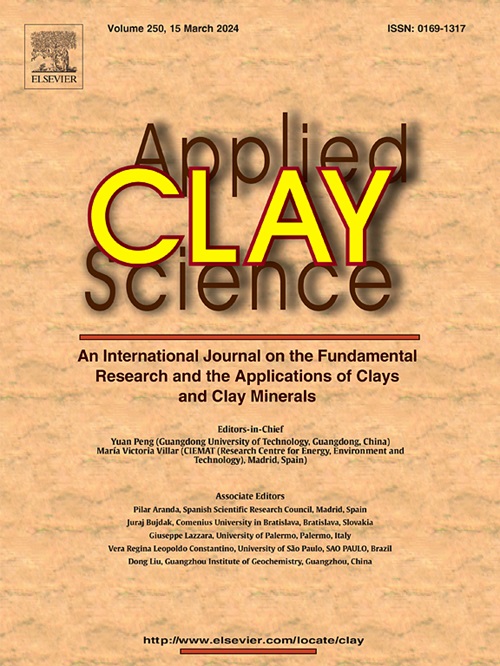与高放废物处置有关的钢铁生物腐蚀的盐度控制
IF 5.3
2区 地球科学
Q2 CHEMISTRY, PHYSICAL
引用次数: 0
摘要
在一个用于乏燃料和高放射性废物的地质处置设施(GDF)中,该罐是主要的工程屏障之一。罐对降解过程(如微生物影响腐蚀(MIC))的抵抗力需要进行表征,以支持GDF环境安全案例。在30°C条件下,研究了盐度对硫酸盐还原细菌(SRB)活性和相关MIC的影响。5%标准膨润土浆液(MX80)在低盐度(0.1 g l−1 NaCl)人工地下水中添加乳酸作为电子供体,为SRB的增殖提供了适宜的条件。经乳酸处理的碳钢(080-A15)表面微观腐蚀速率为>;比缺乏乳酸和无菌对照者高2.5倍。当盐度增加到12.4 g l−1时,添加乳酸导致无菌条件下腐蚀深度的2倍,但在50 g l−1时,没有检测到微生物活性,并且与无菌对照相比,添加乳酸没有明显增加腐蚀。在高盐度(50 g l−1)下,微生物活性和随后的MIC受到抑制,这表明地下水成分在SRB生物腐蚀中起着控制作用。讨论了与土工处置方案的相关性,其中膨润土用于保护和支持废物罐。本文章由计算机程序翻译,如有差异,请以英文原文为准。
Salinity Controls on Steel Biocorrosion relevant to the Disposal of High-level Radioactive Waste
In a geological disposal facility (GDF) for spent fuel and high-level radioactive waste, the canister serves as one of the main engineered barriers. The resistance of the canister to degradation processes such as microbially influenced corrosion (MIC) needs be characterised to support GDF environmental safety cases. Here the impacts of salinity on sulfate-reducing bacterial (SRB) activity and associated MIC were explored in 84-day batch incubations at 30 °C. A 5 % standard bentonite slurry (MX80) in a low-salinity (0.1 g l−1 NaCl) artificial groundwater containing lactate added as an electron donor provided suitable conditions for the proliferation of SRB. Corrosion rates of carbon steel (080-A15) coupon surfaces in microcosms amended with lactate were > 2.5 times greater than those absent of lactate, and sterile controls. At an increased salinity of 12.4 g l−1, adding lactate resulted in 2 times the corrosion depth of sterile conditions, but at 50 g l−1 there was no detected microbial activity, and no pronounced increase in corrosion by adding lactate compared to sterile controls. Here, microbial activity and subsequent MIC was suppressed at high salinity (50 g l−1) suggesting that groundwater composition played a controlling role in SRB biocorrosion. The relevance to geodisposal scenarios, where bentonite is used to protect and support the waste canister, is discussed.
求助全文
通过发布文献求助,成功后即可免费获取论文全文。
去求助
来源期刊

Applied Clay Science
地学-矿物学
CiteScore
10.30
自引率
10.70%
发文量
289
审稿时长
39 days
期刊介绍:
Applied Clay Science aims to be an international journal attracting high quality scientific papers on clays and clay minerals, including research papers, reviews, and technical notes. The journal covers typical subjects of Fundamental and Applied Clay Science such as:
• Synthesis and purification
• Structural, crystallographic and mineralogical properties of clays and clay minerals
• Thermal properties of clays and clay minerals
• Physico-chemical properties including i) surface and interface properties; ii) thermodynamic properties; iii) mechanical properties
• Interaction with water, with polar and apolar molecules
• Colloidal properties and rheology
• Adsorption, Intercalation, Ionic exchange
• Genesis and deposits of clay minerals
• Geology and geochemistry of clays
• Modification of clays and clay minerals properties by thermal and physical treatments
• Modification by chemical treatments with organic and inorganic molecules(organoclays, pillared clays)
• Modification by biological microorganisms. etc...
 求助内容:
求助内容: 应助结果提醒方式:
应助结果提醒方式:


